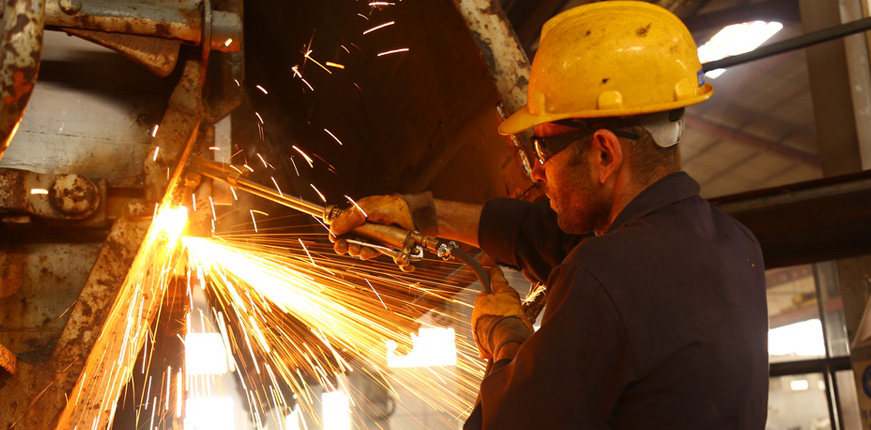
Responsible to environment
Environmental protection is an increasingly pressing issue all over the world. Every business today needs to consider how they can contribute to a more sustainable future. Being a logistics and transport company is no exception. This is what we do.
The Greencarrier Spirit fund – a commitment to sustainability projects
As transports have a significant impact on the environment, we think it’s extra important to make sure we reduce our ecological footprint as much as possible.
Therefore, in 2011, we decided to start a CSR fund that we call the Greencarrier Spirit fund. A part of the Greencarrier Group’s profit is assigned to CSR projects and everyone in the group can apply for support from this fund.
The aim is to promote commitment to sustainability projects and create good examples of how we work with sustainability, both locally and globally. The Greencarrier Spirit fund is open for all types of CSR activities, but we want to give special encouragement to environmental projects.
Environmental Review and Ambitions
This spring we have performed an environmental review in our group to find out how we can improve our environmental impact and increase our knowledge and awareness about the environment. With this as a foundation we can now take the next step.
How we engage and take care of the environment
As we believe it’s important for us to be involved in environmental issues, we engage and take care of the environment on many levels.
Improving our environmental impact
Considering transportation’s significant environmental impact, we strive to reduce the use of resources and prevent pollution of the air, water and soil and thereby constantly improving our environmental performance. We calculate emissions and evaluate our largest suppliers.
Increasing knowledge and awareness about the environment
Our ambition is to stimulate each employee to increase their knowledge about environmental issues, and be aware of the environmental aspects of their duties. We are introducing environmental training for all staff.
Communicating how we take responsibility for the environment
In order to spread knowledge about our environmental work we continuously communicate this work both internally and externally. (This blog article is one way of doing that!).
Involving everyone and complying with laws as a minimum
Customers, suppliers and other partners are, together with our employees, involved in this endeavor. As a minimum, we comply with laws, ordinances, regulations and other requirements. We want to go further than what the legislation requires from us.
Finding more sustainable projects
Our ambition is to increase our efforts to improve our environmental impact by finding more projects to support in this field. Our Greencarrier Spirit fund is one way of doing that.
How do you work to contribute to a greener future?
We’re committed to supporting a sustainable development. Naturally we encourage our customers to do the same! How do you work to contribute to a greener future? Let us know! Please leave a comment in the field below!

The engineering of today
For ages, engineering has turned imagination and fantasy into something that is tangible and useful. For instance, consider the invention of the wheel as one of the oldest examples of how engineering has transformed our lives. Since the dawn of the industrial age, the importance and influence of Engineering has grown at a blazing speed.
The modern world we live in wouldn’t have been possible without the marvels of engineering – microprocessors, high-speed motors, cellular networks, power grids, automated assembly lines and many others. It wouldn’t be too far-fetched to claim that without engineering, our society would have ossified in no time.
Today, the application of engineering spans the spectrum from deep sea exploration to space travel and beyond. In the modern era, it would be extremely difficult to find an avenue where engineering hasn’t left its footprint. From construction to aeronautics, medicine to environment, and even the chair you are sitting in, engineering is everywhere!
Influence of Engineering Across Various Sectors
Let’s take a look at how engineering has contributed to various sectors:
1. Construction
Without Civil engineers, the Hoover Dam, the Burj Khalifa or the Chenab Bridge would have been a distant reality. Engineering has contributed immensely towards the development of infrastructure that is crucial to the sustenance of our civilization. Proper knowledge of civil engineering has not only enabled us to build bridges, dams, tunnels, expressways but also figure out a way to effectively handle traffic congestions, disasters, and other unfavorable circumstances.
2. Medicine
When we talk about the progress in medical science, the image of a biologist or a highly-qualified doctor comes to our mind. But, you will be surprised to know that engineering and medical science goes hand in hand with each other to improve the quality of healthcare. From MRI machines to X-rays and pacemakers to Glucose Level Monitors – engineering has contributed more to medical science than we can fathom.
3. Energy
Have you ever wondered about the technology that powers small household appliances to humongous machines in factories? Of course, it’s the electric current that is conducted by high-tension wires from power stations. But, how are the grids designed? Or, how do you ensure that high-voltage current doesn’t damage your gadgets? Well, you have electric engineers to thank for that. Electrical engineering is helping us generate a massive amount of energy by designing and developing power grids, transformers, commutators, etc. Over the last decade, power generation through sustainable means such as solar and wind energy have been made possible due to the advancements in electrical and other engineering and technology.
4. Environment
Development and deployment of systems that provide drinking water, that is safe for human consumption is one of the major contributions of environmental engineering. Moreover, we also need a mechanism that can reduce pollution and clean up contaminated water bodies, land, and sustain our crops and livestock. Thankfully, the pioneers in environmental engineering are tackling these issues by coming up with new and innovative solutions to minimize pollution making our industrial processes environment-friendly.
Apart from these areas, Engineering has a wide range of applications in automotive, food processing, manufacturing, electronics, avionics, biotechnology, and software industries.
How Engineering is Solving Complex Problems
The basic tenet of engineering has always been about solving complex issues and making our lives simple, safe, happy and productive. If we look through the pages of history, we can see how engineering has solved complex problems. Be it transportation, manufacturing, or even winning wars, engineering has always played a pivotal role in our ventures.
Even today, engineering is helping us create devices, machines, and software that can solve some of our most complex problems. For example, robotics and embedded engineers have already developed robots that can detect and disarm explosive charges. Robots have already been developed to help in the case of fires and disasters to evacuate trapped victims. These systems are being put through rigorous testing and undergoing continuous improvement before they can be deployed on a large scale.
Climate change is a looming disaster; it could be quite disastrous for the human race if left unchecked. Fortunately, engineers and scientists are working together to develop green technologies, low-cost nuclear reactors, and means to harness solar power. These innovations will focus on curbing the amount of pollution humans spill into our ecosystem.
How Engineering Education has Evolved over the Years
As Engineering has evolved over the years, engineering education has also become more specialized. These days, colleges offer multiple streams or engineering such as electronics, electrical, mechanical, automotive, aeronautic, telecommunications, chemical, biotechnology, etc. Mechanical engineering is considered to be an evergreen branch because almost every industry requires engineering graduates from the mechanical specialty. Other than that, the future is looking increasingly bright for software, IT and telecommunications engineering graduates as these fields are closely related to the internet and networking. That being said engineering is all about problem-solving and transforming dreams into reality. So, as long as our desire to build new things doesn’t come to a halt, the importance of Engineering will keep soaring high.

